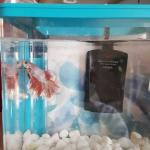By Susan Barnett, Founder, Faiths for Safe Water
My dad was the most popular guy in the neighborhood during a snowstorm. He had an old 1950s truck with a bright yellow plow attached to the front. He’d plow all the neighbors’ driveways, leaving them with just the small pathways to clear and making the grueling chore of shoveling so much easier. I grew up in the snow belt of northwestern Pennsylvania. My dad had lots of days to drive around in that old green Ford and plenty of chances to be a good neighbor. And he was.
I suspect there are plenty of folks across much of the U.S. right now who’d love to get their hands on my dad’s old truck. People not used to shoveling have had to move tons of the not-so-fluffy stuff. It’s very heavy. It is, after all, water.
But after that tough couple of hours hauling all this frozen water, heading inside and turning on the taps to gulp down the water that spills out is refreshing. And most of us likely won’t have to shovel too many more times this year. But imagine for a moment the burden of having to shovel snow every day — just to keep your family alive.
Shoveling snow may be mostly a man’s seasonal burden in many parts of the U.S., but in the developing world, hauling the dead weight of water is a woman’s daily burden. Globally, women spend up to 60% of every day hauling 40 pounds of dead weight in those bright yellow jerry cans. It’s backbreaking labor. And it’s horrifyingly dangerous, walking along a desolate path, hoping not to find trouble waiting at the distant water source.
Women bear this burden and face these dangers because water is vital to all life. Today, the lack of access to safe water and sanitation remains the #1 killer of children under the age of 5, killing more children around the world than malaria, AIDS, and TB combined. Killing more people than Ebola. Unsafe water is the world’s silent pandemic.
Yet water is also the single symbol shared by every world religion. Religions have long understood the sanctity of water in ritual and in life.
Perhaps that makes it all the more appalling that in 2016, 663 million people around the world do not have access to safe water. 2.4 billion people lack the basic dignity, safety, and sanitation of a toilet. This global water/sanitation crisis is at the root of half of all cases of under-nourishment in children because repeated bouts of diarrhea and intestinal worm infections make it hard — or impossible — for their little bodies to absorb nutrients. Some 50 different diseases and illnesses are traced back to unsafe water, filling half of the world’s hospital beds.
The World Health Organization looked at those hospital beds, more specifically, at health care facilities in 54 countries after the Ebola outbreak. The WHO found that almost 40% did not have access to safe water; almost 20% did not have even basic sanitation; and 35% did not have soap and water for hand washing. I think about this a lot. The global water crisis undercuts so much. We spend billions delivering life-saving drugs to HIV/AIDS patients, which they must take with contaminated water that makes their already immuno-suppressed bodies sick and unable to absorb the medications. Food security is the popular focus of today’s foreign aid, but it’s impossible without water security.
Not making water, sanitation and hygiene a priority defies all logic. But let’s throw away all the statistics about the global water crisis.
I recently read about a little boy named Allaman. Allaman Sidiqui was born in Mali. His mother, Fatima, has a one in 17 chance of losing her child to sepsis. Easily prevented infections, like sepsis, just require soap and water yet they kill some 430,000 newborns every year. When Allaman was two weeks old he developed black spots over his body and refused to drink. On his 15th day, he died. Each of us was diminished when this unique, unrepeatable gift of human life was wasted. All this little boy needed was some soap and clean water.
If we can help provide ready access to safe water, a toilet and education about proper hygiene, we can set in motion a cycle where maternal and child health becomes a priority. Where surviving to your fifth birthday isn’t just getting lucky. Where illness and death are replaced by education, better health, greater productivity, and new economic opportunities that benefit us all in a global economy and increase our security. The causes of poverty are intricate and complicated. What’s remarkably simple is the immediate impact and multiplier effect of water. We are looking at one of the rare issues where the problem is not bigger than the solution.
We know we can do this. 2.6 billion people have gained access to improved drinking water since 1990 and more countries are focused on ending open defecation and increasing access to sanitation. But until our pipes freeze, or a California town is hit by drought, or water is poisoned with lead, or a snowstorm cripples our city, we never really think about how very fundamental water is to every aspect of all health and life.
Just maybe, the next time you are out shoveling your driveway, you will start to think about this solvable problem. Perhaps, as your muscles tire from the weight of water, you will be reminded to support the many faith-based and secular global health and development organizations that are implementing successful, long-term water and sanitation solutions. Perhaps you’ll help remind Congress at budget time that all God’s children deserve a drink of clean water.
Image courtesy of Shutterstock.com
Susan Barnett is a former award-winning network news producer, now a strategic media and communications consultant to nonprofits, working at the nexus of media, faith and social justice. She is founder of Faiths for Safe Water and Impact Communications. Because she lives in an apartment in New York City, she no longer needs to shovel snow.


















